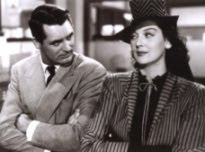 FADE IN/FADE OUT
FADE IN/FADE OUTThe lynch-mob mentality is nothing new to America and, arguably, it was perfected in Hollywood, where mean-spirited people routinely make audience-friendly movies. Seems a tad contradictory, right?
Well, that's show biz, kid.
And politics. Yes, now people with pretensions of running the country have adopted Hollywood's "mean girls" spirit.
Part One: FlashbackNorma Jean Baker, an ambitious puppy, came to Hollywood in the late 1940s, and was snapped up by the suits at Twentieth Century-Fox, who renamed her Marilyn Monroe and groomed her for stardom.
Hollywood created Marilyn, exploited her for a little more than 10 years and then set out to destroy her when she exhibited she had a mind.
I've no idea if, when Monroe died of an overdose on August 5th, 1962, it was intentional or accidental, but I am convinced that she was murdered.
By Hollywood. By the studio system.
 Part Two: Flashforward
Part Two: FlashforwardIt's August, 2008 and John McCain, the Republican running for President of the United States, takes everyone by surprise when he selects a seeming unknown, Sarah Palin, the governor of Alaska, as his vice president - although it became increasingly clear not only that Palin was actually choosen by certain higher-ups, strategists, in the McCain campaign, but also that she wasn't exactly an unknown entity. She was well-known by a group of influential conservatives pundits, whom she aggressively courted.
An aside: I had an immediate, near-visceral dislike of Palin who, at turns, came across as such dubious movie characters as Tracy Flick ("Election") and Lonesome Rhodes ("A Face in the Crowd"). She seemed jaw-droppingly unqualified and this first impression was exacerbated by the venom she casually spewed about Barack Obama on the campaign trail.
And unlike most people, I don't perceive Palin as a modern woman. Quite the contrary, I find her rather retro, almost creepily so.
When McCain lost the election, without missing a beat, his camp - allegedly unbeknownst to him - set out make Palin the scapegoat.
Like Monroe, she was created by an evil system, exploited by it and then cruelly abandoned by it. She was on her own now.
Consequently, I've gone from a Palin detractor to a Palin sympathizer.
There's no doubt that Palin was complicit in all of this. But to put it bluntly, she's getting a raw deal - a
very raw deal - from the very people, overpaid morons, who mindlessly foisted her on us in the first place.
 Part Three: Flipflop
Part Three: FlipflopI never expected much from Sarah Palin but I did expect more from Rachel Maddow.
My decision to flipflop was prompted by Maddow, the MSNBC pundit who, up until about 9:30 p.m. (est) last night, I admired and enjoyed. I liked the way she thinks. She's smart, savvy, quick and sarcastic. Hey, what can I say? I'm a die-hard liberal.
But, frankly, her coverage on Friday of Palin's sad attempts to defend herself against a huge machine which includes the McCain campaign, probably McCain himself and the carnivorous media (and, by extention, Maddow herself) was outright disgusting. Hands-down. No argument.
It was the first time that I could say Rachel Maddow was toxic.
Of all the people who covered the election, Maddow came across as the most sensible and fair-minded. Certainly, she would see that the villain of the piece is not Palin but the monolith that is the McCain campaign. But no.
Gloating and glib, in a piece titled "The Annotated Palin," Maddow took it on herself to dissect -
literally dissect - every sentence in Palin's response to the McCain cowards (probably men) who have set out to destroy her professionally because their hopeless candidate didn't win (a failure that, by the way, has the potential to damage their careers along the way).
Maddow played right into their hands. Her schtick went on for a good six or seven minutes and, as a male feminist, I found it appalling.
I can't decide who's worse - the anonymous McCain person leaking all the anti-Palin stuff to the press or the media which continues to spread the possibly fake (and possibly libelous/slanderous) tips so eagerly. Of course, it's been assumed it's a woman within the McCain camp doing all the spilling - thereby setting woman against woman. Very nice, guys.
And very typical, too.
Anyway, as Palin talked, Maddow gleefully dissected. And we didn't just get her voiceover. No, we were treated to shots of Maddow in the upper left corner of the screen making her trendily snarky facial expressions. Only this time, it looked more as if she was having an extended seizure.
I felt like I was back in Junior High. Depressing.
And the sad fact - something missing on Maddow - is that Palin spoke this time with absolute clarity.
There was nothing wrong with what she said.Very unattractive, Rachel, and very much beneath you. Go back and look at that ugly segment. If you're still happy with it, congratulations. You'll have a career as imposing as, say, Bill O'Reilly's and Rush Limbaugh's.
A dubious aspiration indeed.
Note in Passing: At one point during the election campaign, one of Joe Scarborough's guests astutely opined that Sarah Palin possibly didn't work well with "handlers" probably because she was used to running her career on her own, mom and pop-style, with her husband, Todd.
She has certainly proven this to be right in the past couple of days, as she set out to defend herself. From where I sit, she's better when she, and only she, is in complete control of herself. My Question is, how on earth can she possibly pursue a national office - and run a major campaign for one - if she prefers going solitary, eschewing handlers?
Seems problematic.
(
Artwork: Marilyn, Sarah and Rachel who - what? - just doesn't get it)






























